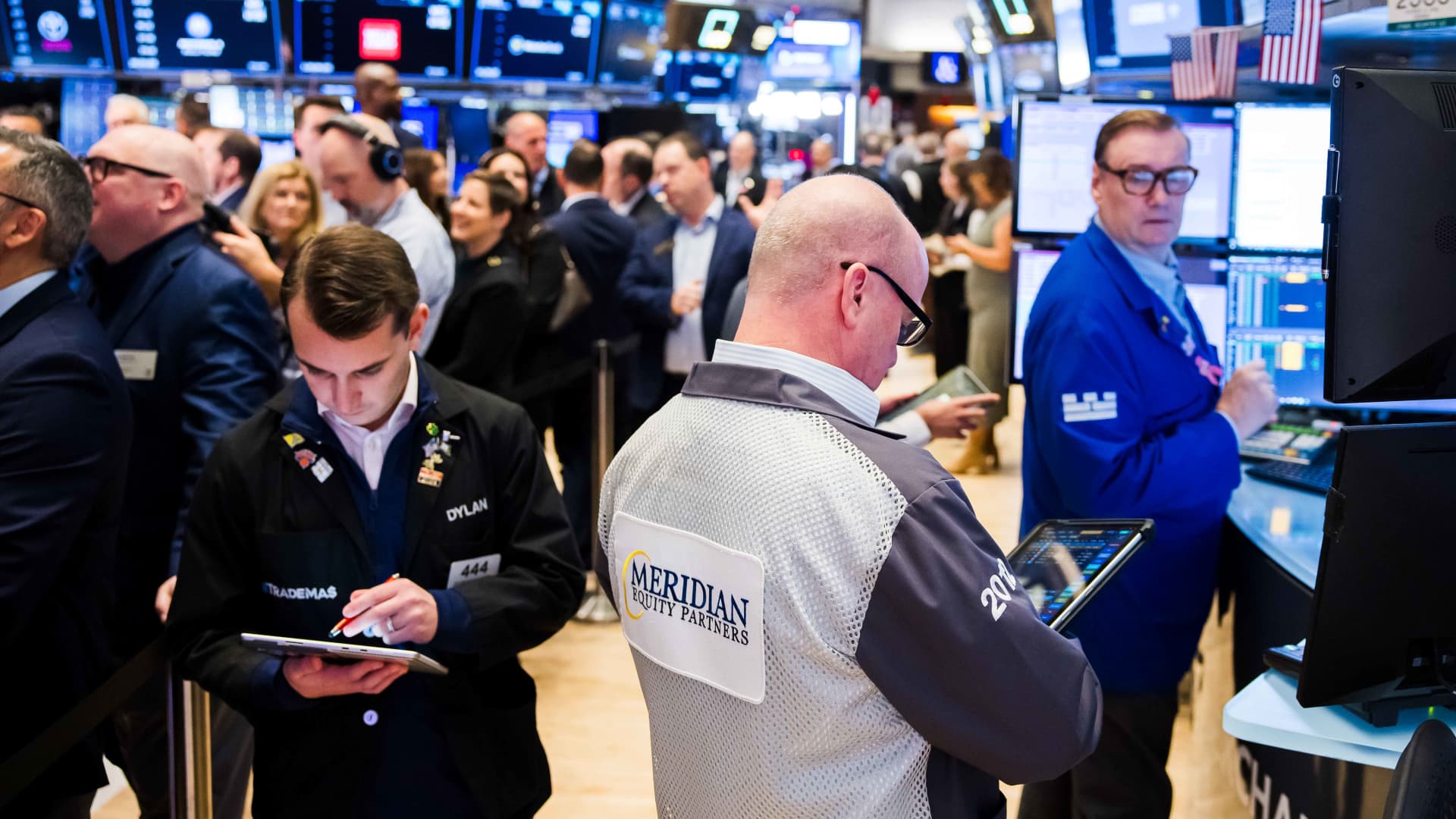(These are the market notes on today’s action by Mike Santoli, CNBC’s Senior Markets Commentator. See today’s video update from Mike above.) Caution continues to eclipse conviction into a new week, with investors pondering unresolved questions over the AI sector, anxiety over an economic soft patch under a wait-and-see Fed and a further purge in the most aggressive assets (high-beta/low-quality stocks, crypto, riskier credit). The S & P 500 has been under pressure from big year-to-date winners and risk-appetite proxies such as Nvidia , Palantir and Robinhood , and the index is now spending quite a bit of time near the lower end of a two-month range. A close under the 50-day moving average was the first since April. The low from the last two weeks of chop is around 6630. Beyond that, the logical place for bulls and bears to fight out the trend would be just above 6500, the September/October low and the top of the summertime range. To zoom out a bit, the S & P 500 went six months without so much as a 3% pullback and has now had three of them in the past five weeks. We entered October at cycle-high valuations (S & P 500 at 23x forward P/E, Nasdaq-100 at 28x), euphoria over the velocity of the AI buildout and collective certainty that the Fed would keep trimming rates into a steady economy. The last few weeks have been a reassessment of all of that, in the context of some of the most crowded, high-momentum positions getting flushed out. No major trends have been broken, things still appear more or less routine in magnitude for a pullback after a huge run. Yet the rotations from popular to neglected sectors and the rapid shift in perceived fortunes of various AI contenders has the tape seeming more unsettled than the headline indexes might suggest. The fact that bitcoin can’t find its footing even after a 25%+ decline seems to be a particular drag on risk appetites and assessments of the liquidity backdrop. Perhaps this helps explain why the Volatility Index (VIX) is jumpy, now above 22, with the S & P 500 less than 4% off a record high. The flip side of the market’s general resilience in recent months is that the pullbacks have not gone far enough to generate a thorough positioning flush and reset prices and expectations. This also means the S & P isn’t really close to an extreme oversold condition, though some downside leadership groups ( homebuilders , small caps ) are starting to flash such signals. Hard to escape the macro unease evident below the surface. The equal-weighted consumer discretionary sector is off 1.6% and now almost in a 10% correction. Within consumer, the leisure/entertainment stocks are rolling over, with previously healthy-looking travel names hit Monday by Alphabet’s rollout of AI-enabled travel-assistance services. As if the worries over AI, crypto and cyclicals weren’t enough, the credit-sensitive alternative asset managers are getting hit anew after Blue Owl Capital moved to combine two of its funds and suspend withdrawals from one. Whether there’s anything scary happening here or not, the market is in no mood to give the benefit of the doubt to credit vehicles operating in the riskier reaches of commercial finance. For those lurking and waiting to pounce on lower prices as this dip deepens, the bull case remains that earnings have been excellent, with forecasts holding up well, some fiscal tailwinds should emerge into 2026, seasonal factors remain favorable based on history and sentiment has gone from blissful to concerned. The CNN Fear and Greed Index is in Extreme Fear at a reading of 15 on its 1-100 scale. (At the tariff-panic low in April, with the S & P 500 off almost 20%, this index got down to 3).





